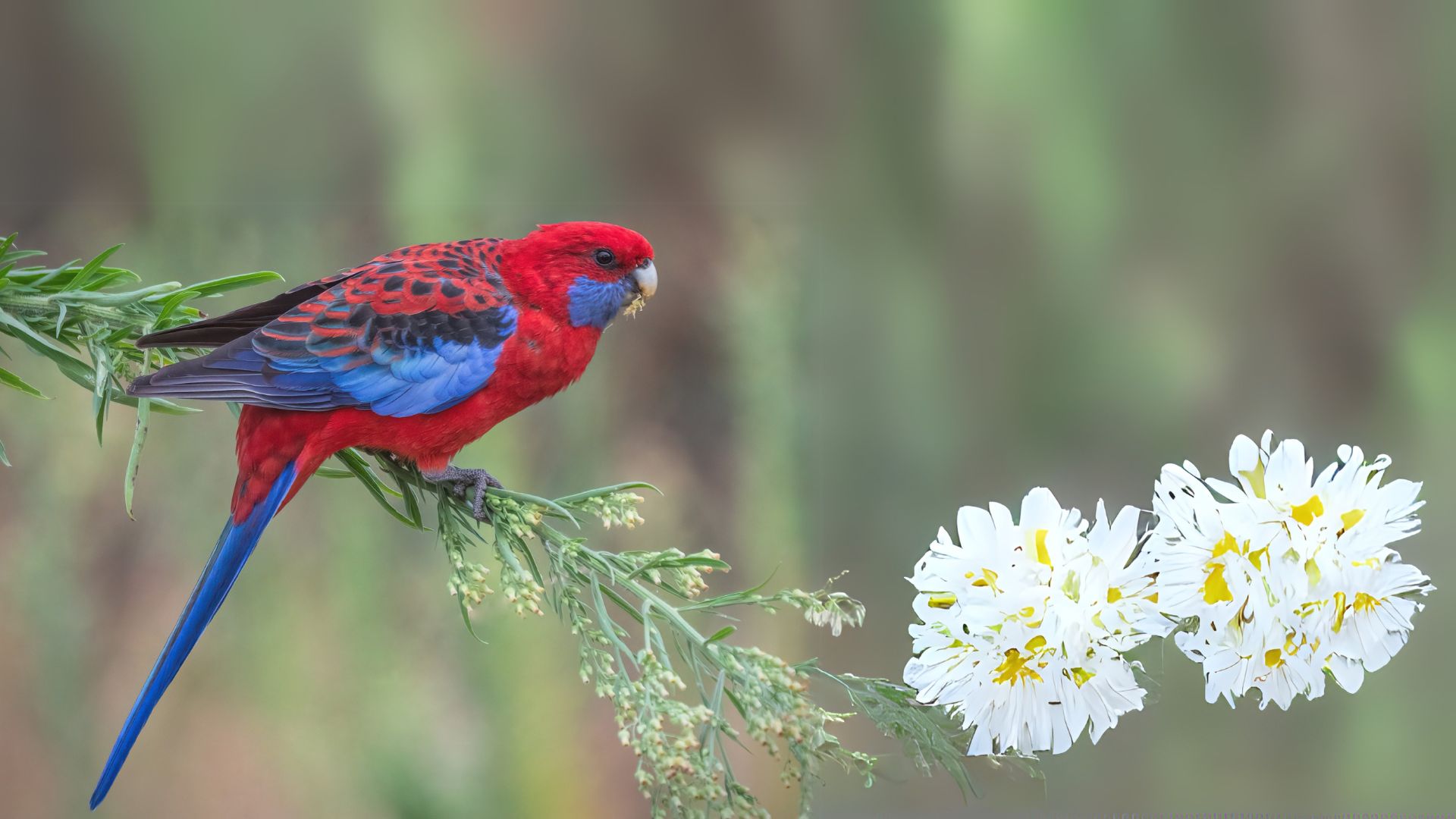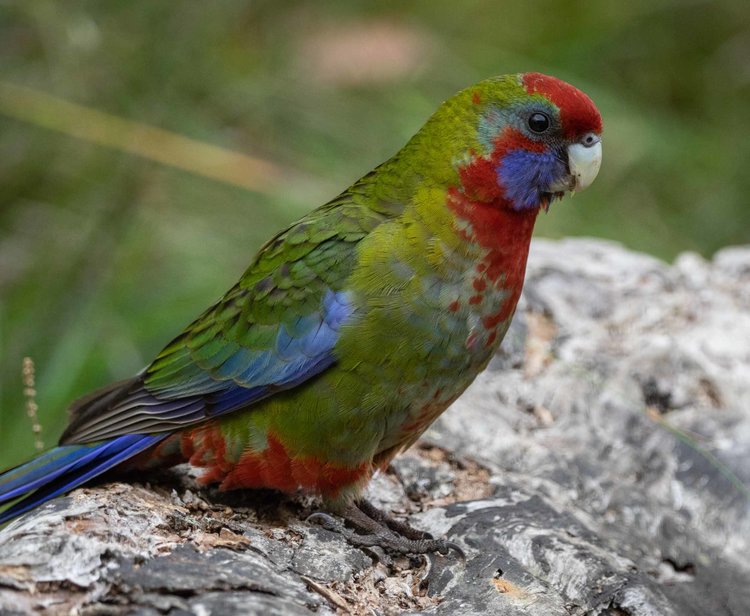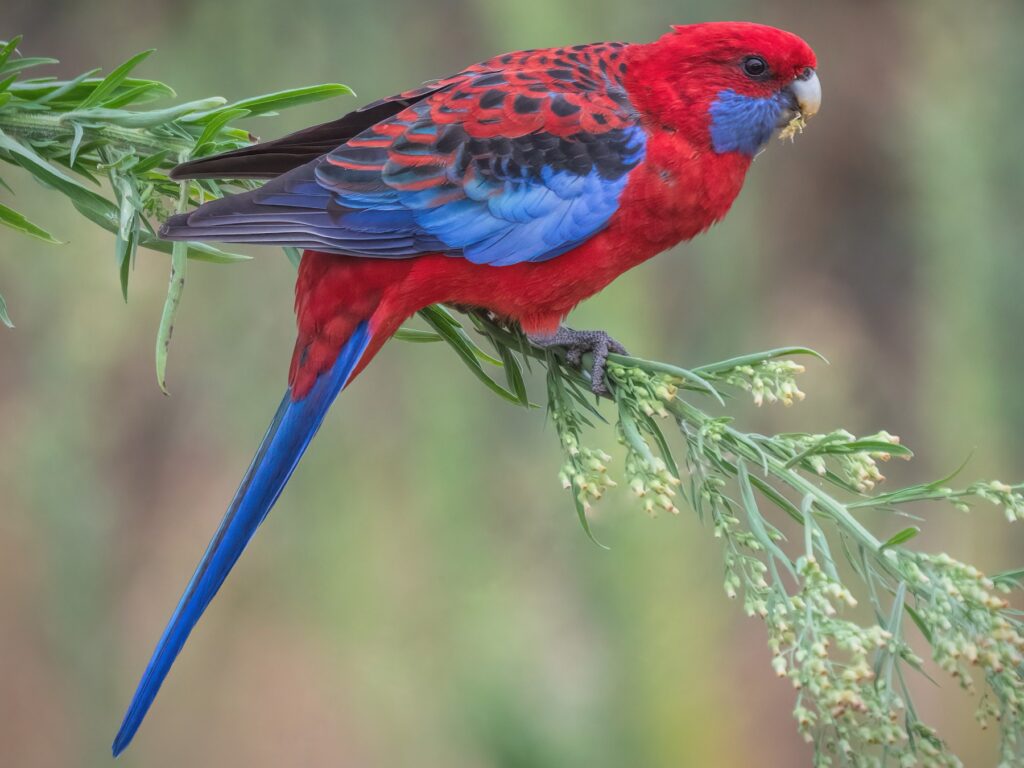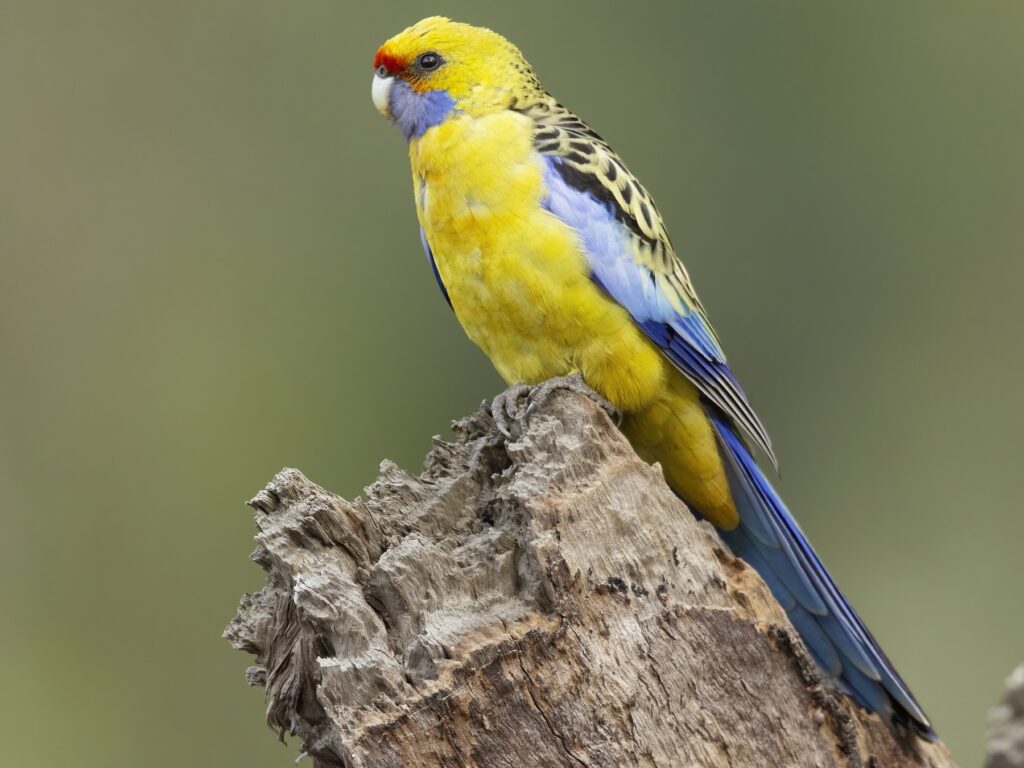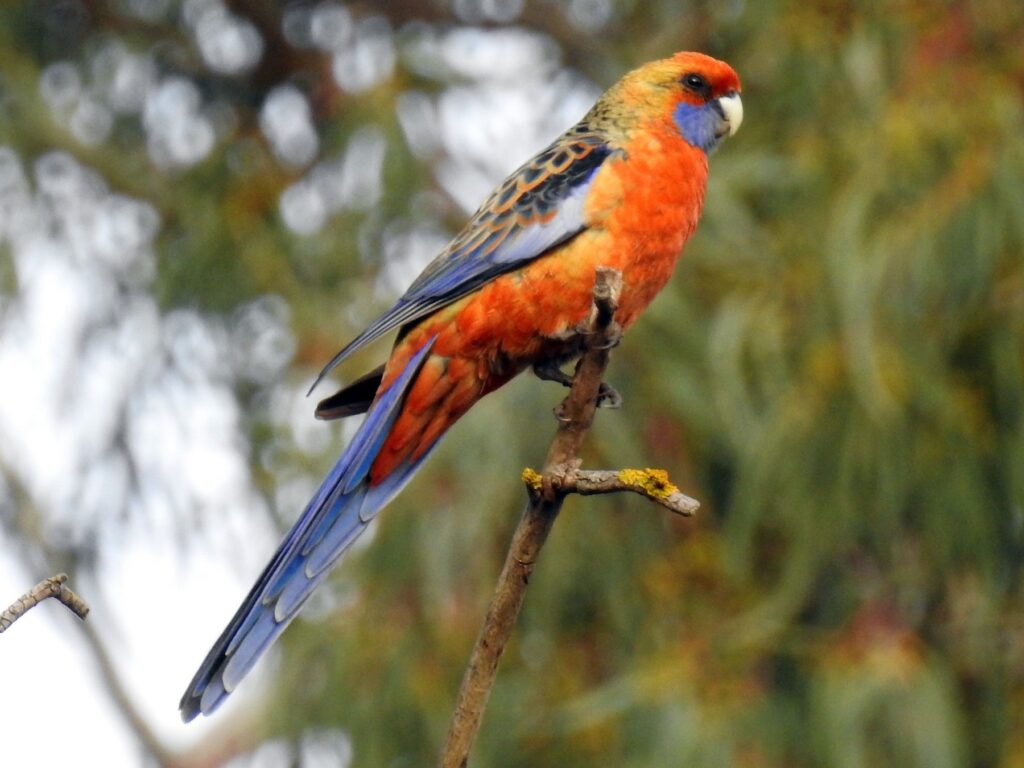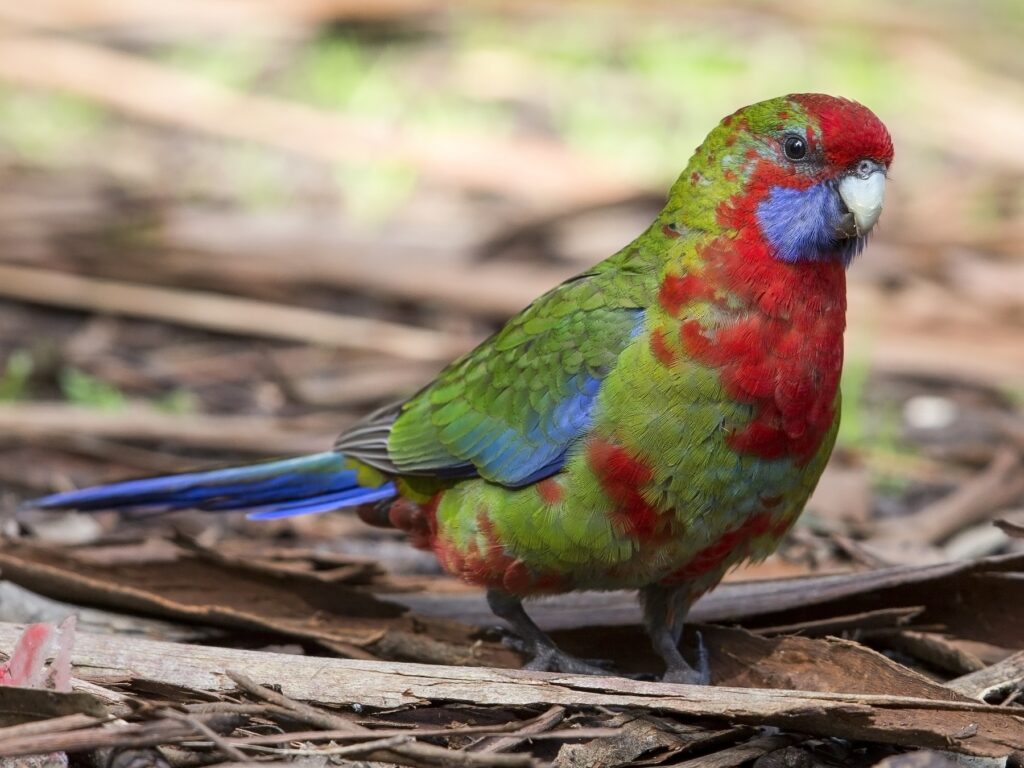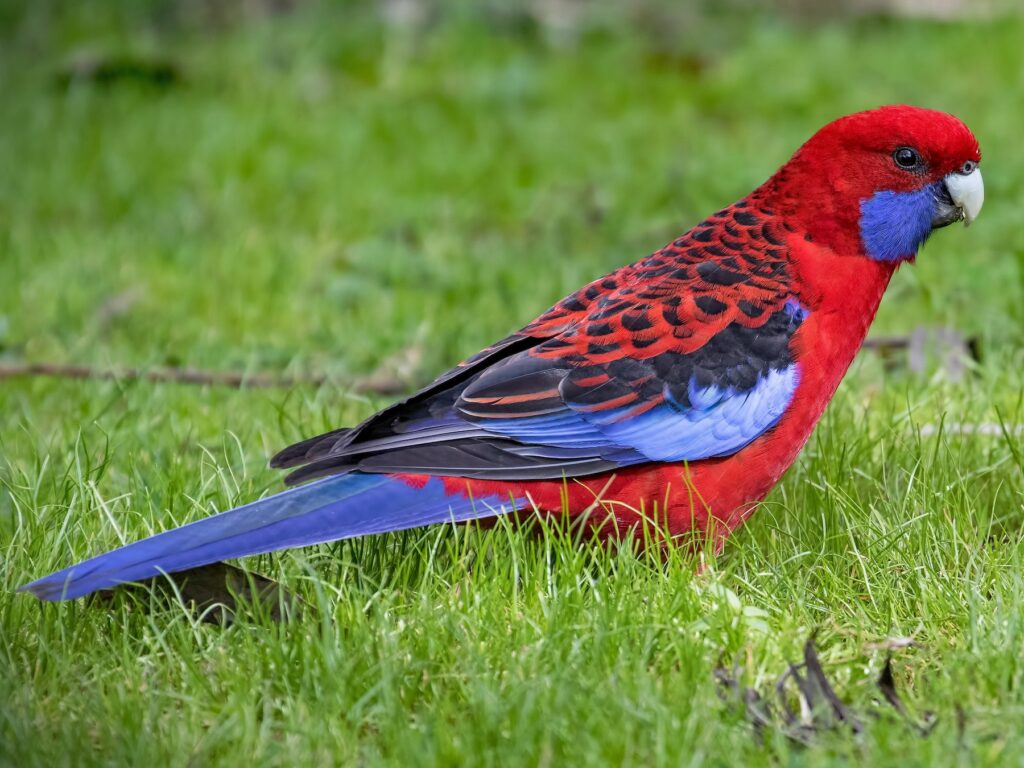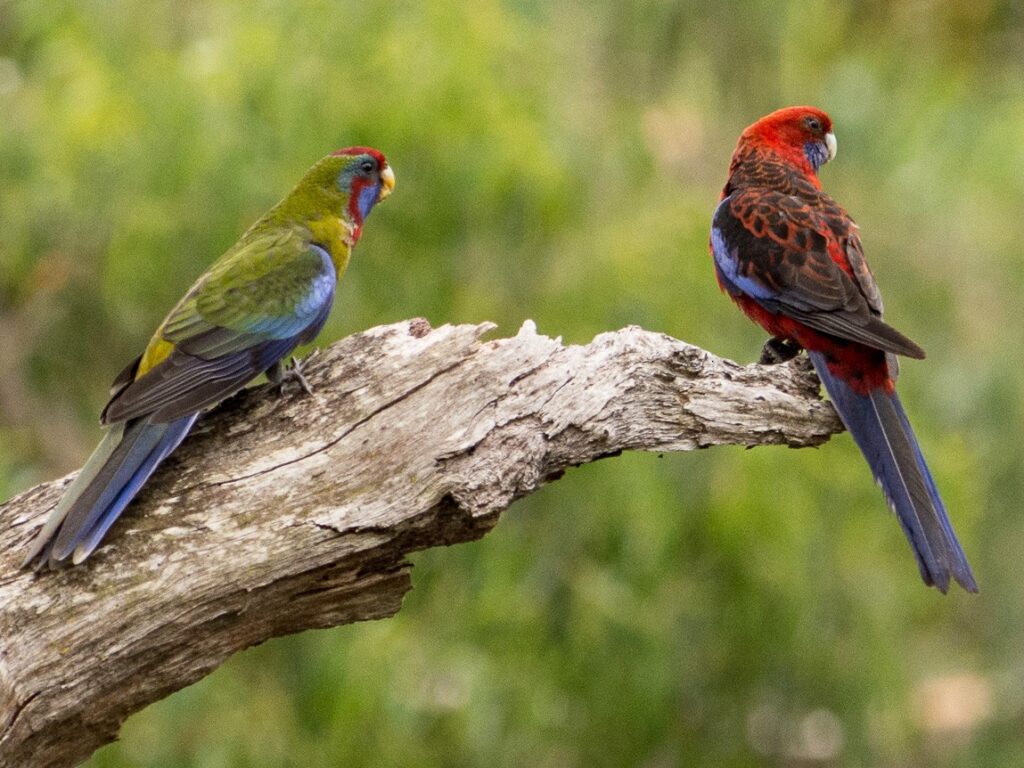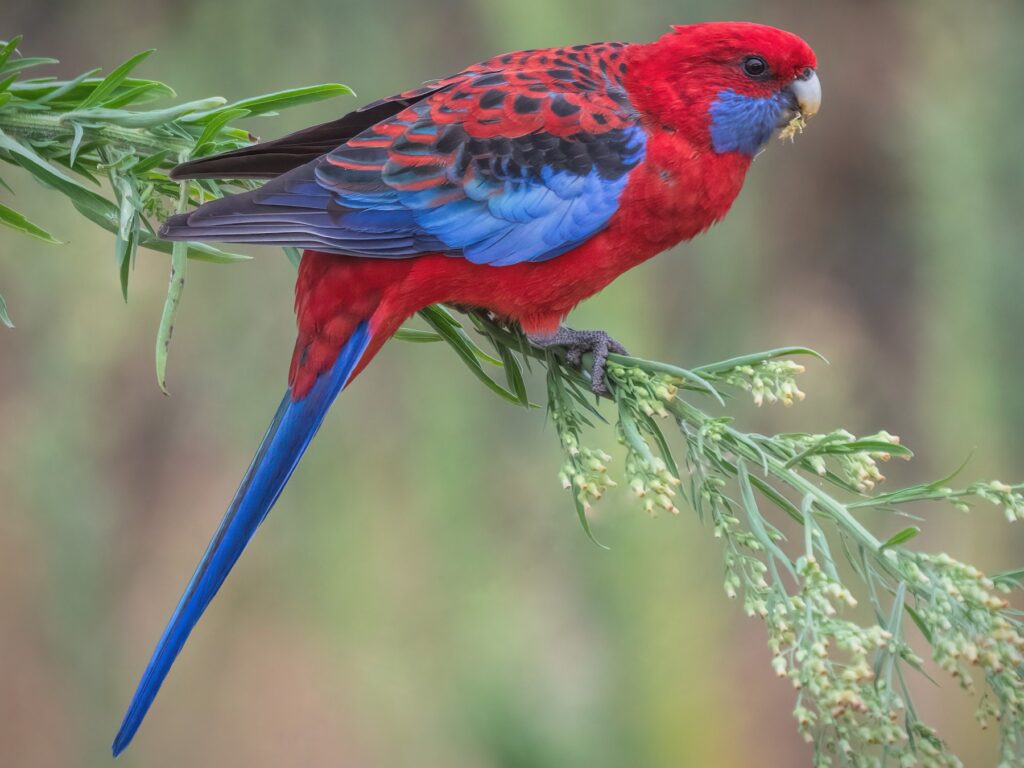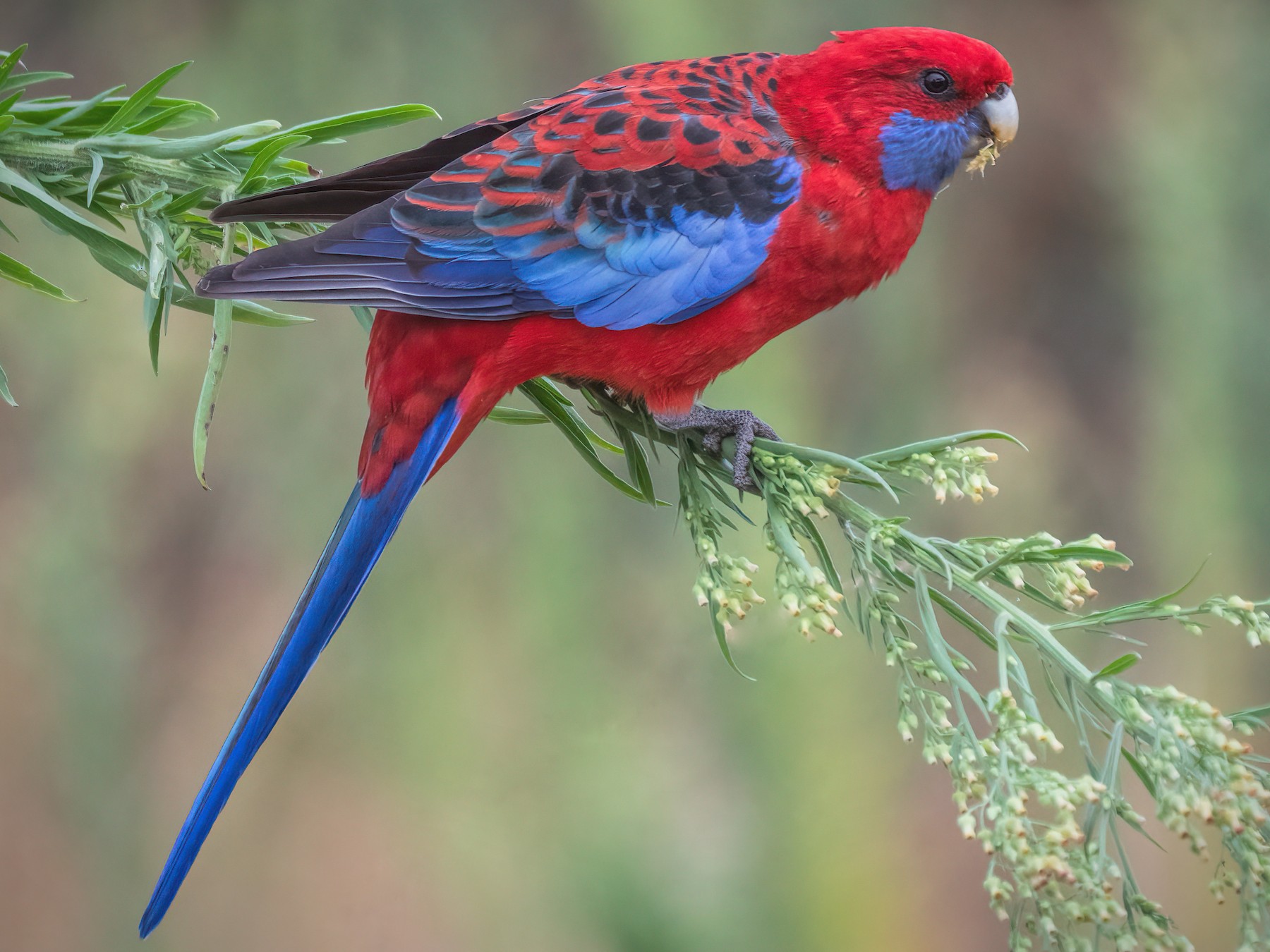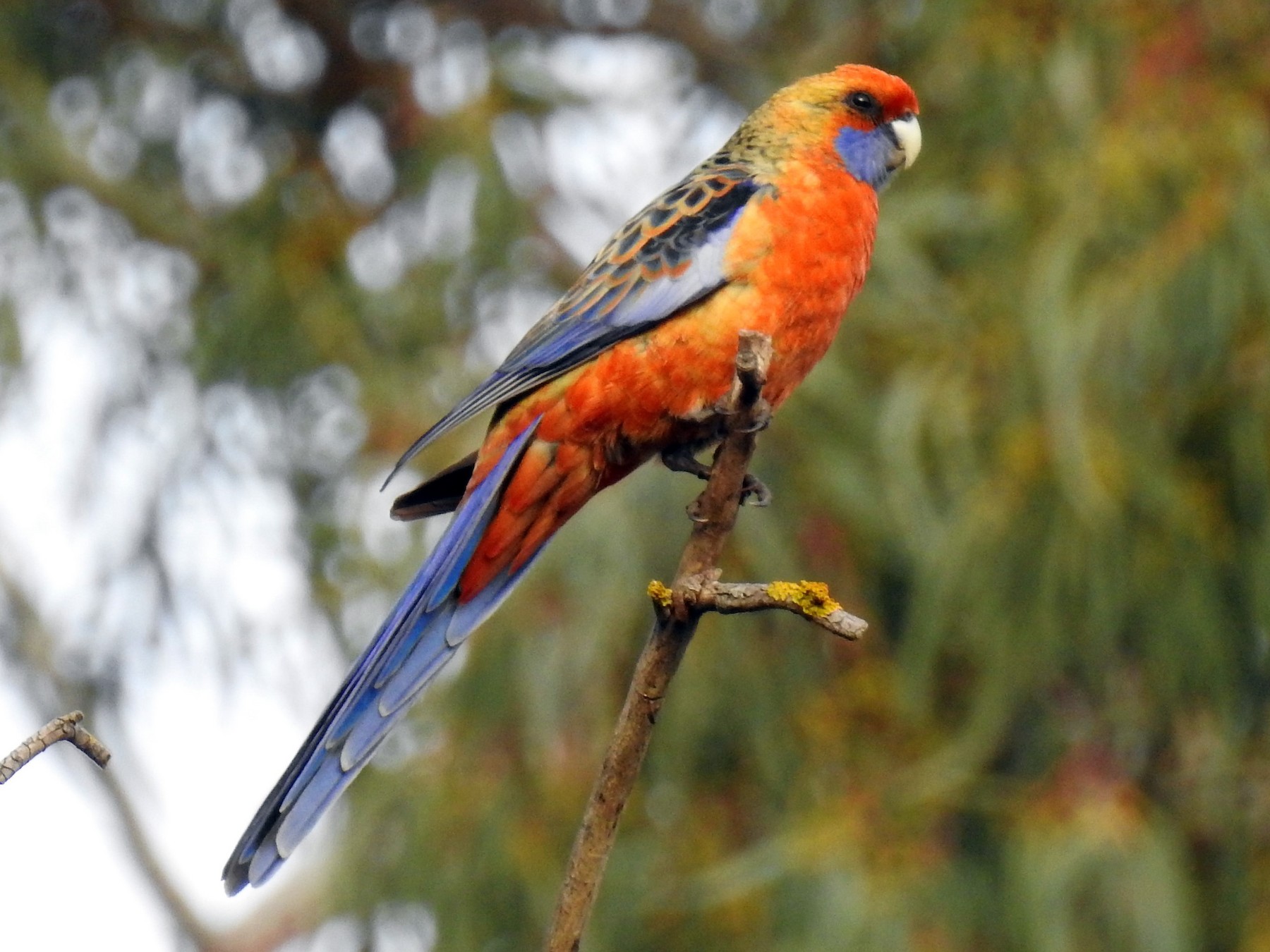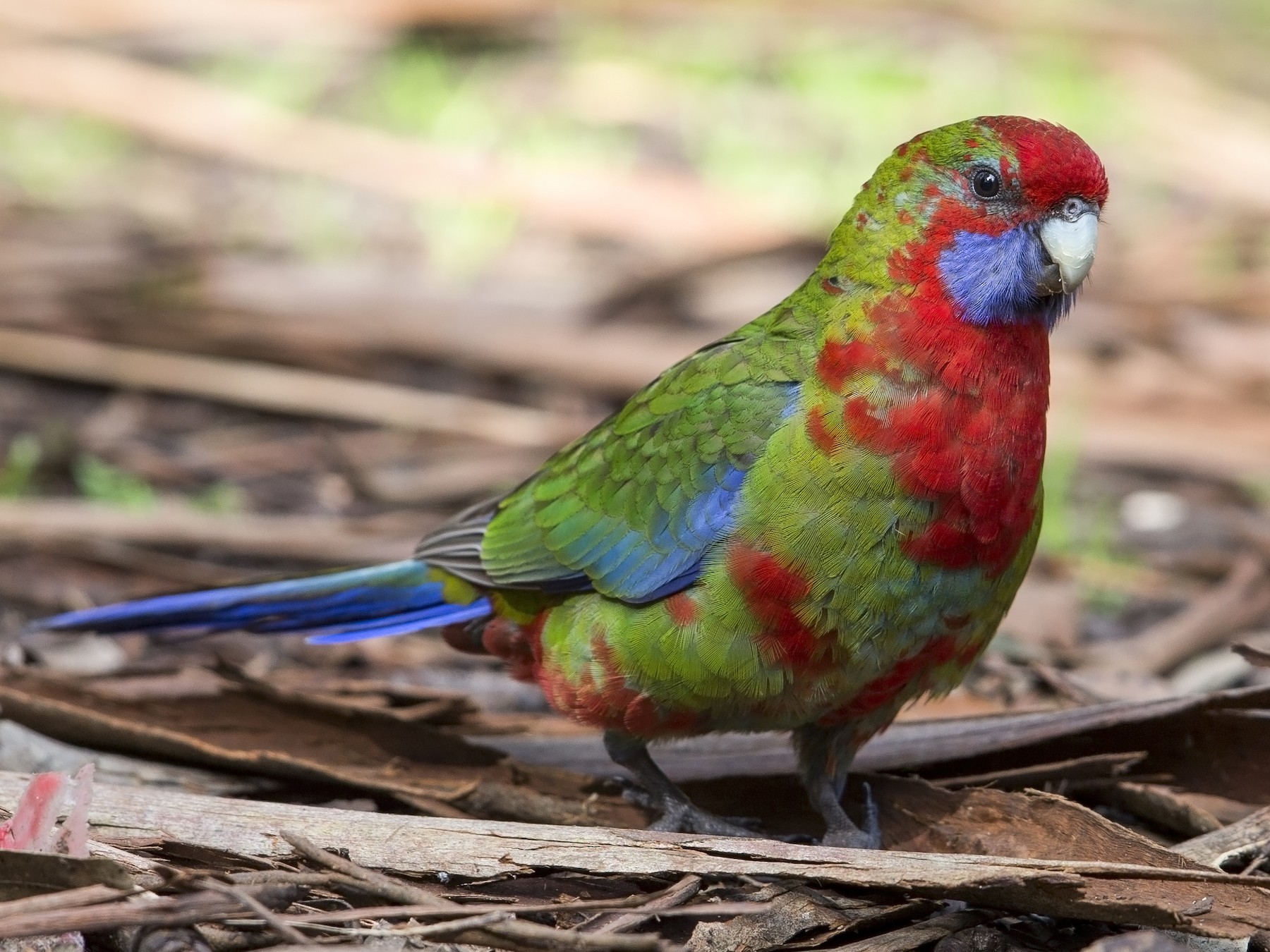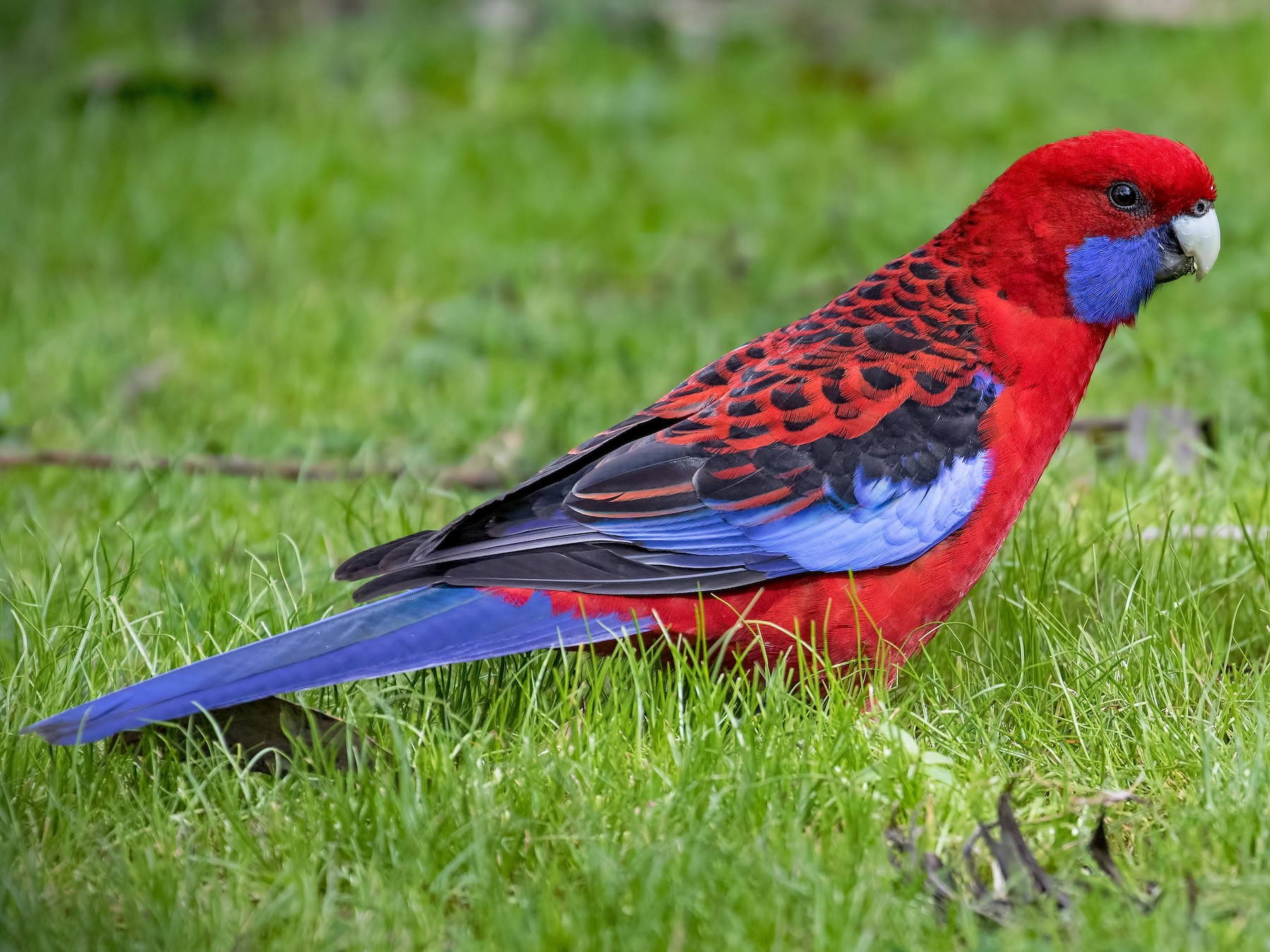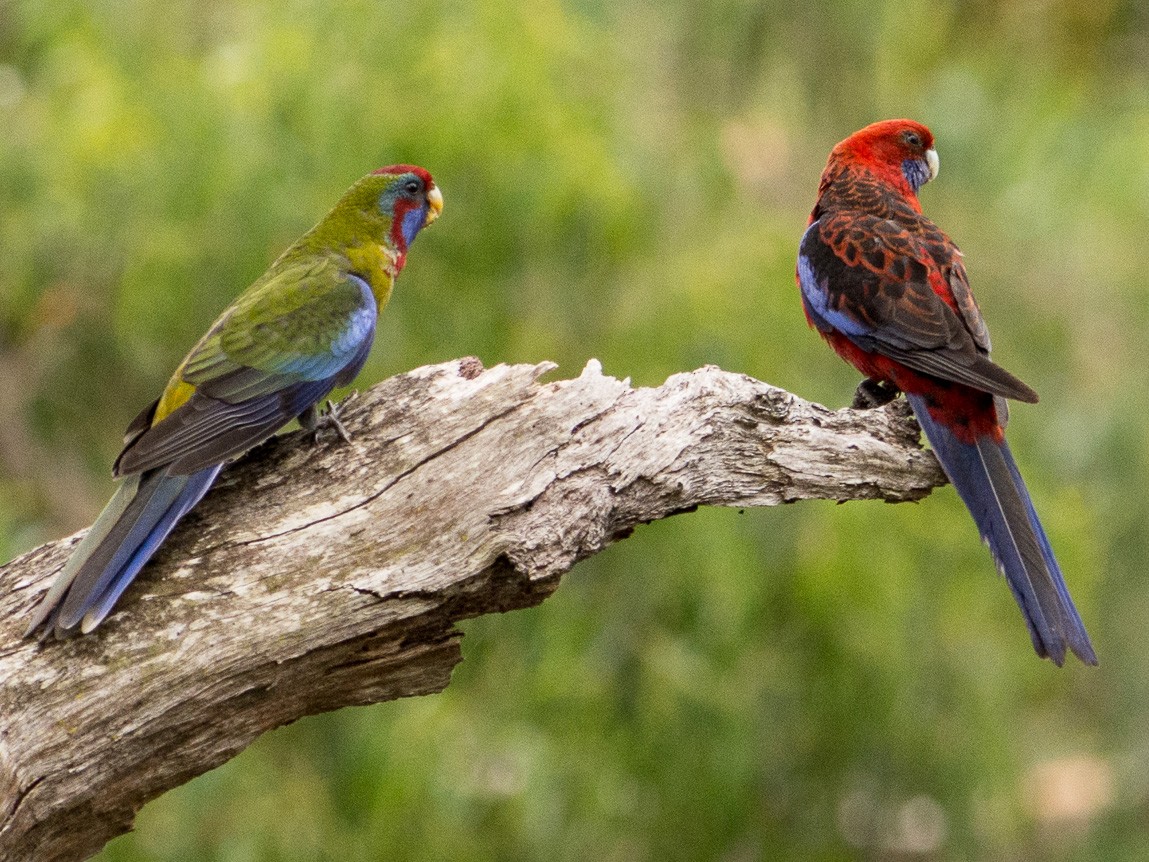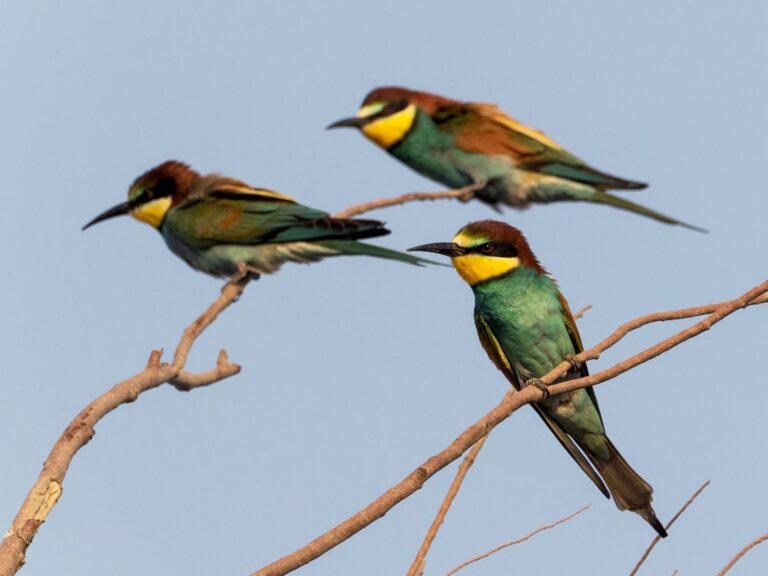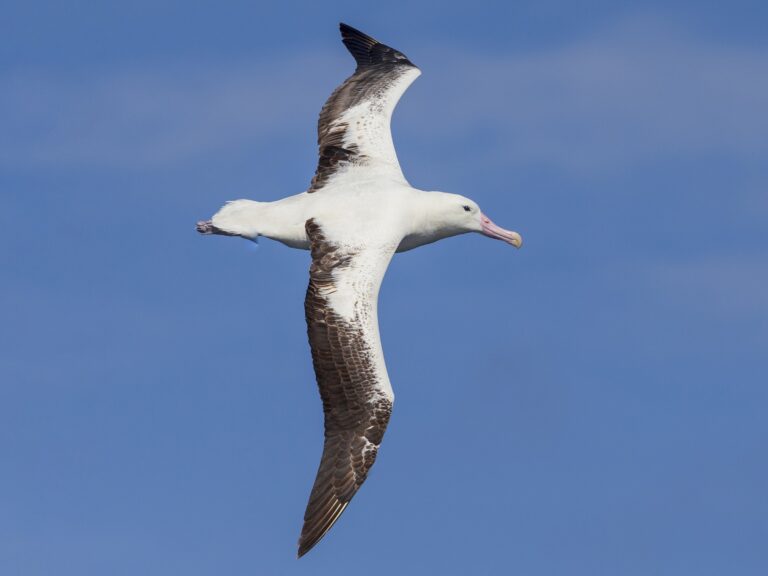Crimson Rosella: The Vibrant Parrot Captivating Australia’s Wilds
The Crimson Rosella is a vibrant and striking parrot known for its stunning plumage and unique behavior.
These birds are not only visually appealing but also exhibit fascinating social dynamics and breeding habits. Found primarily in southeastern Australia, they thrive in various habitats, from forests to urban areas. This showcases their adaptability and resilience.
Visitors to their natural environment may be captivated by the bright red, blue, and green feathers of the Crimson Rosella. These colors play a crucial role in their courtship displays and social interactions.
Their diet typically includes seeds, fruits, and nectar, making them essential players in their ecosystem by helping to pollinate plants.
Key Takeaways
- The Crimson Rosella is recognized by its colorful feathers and social behavior.
- These parrots have a diverse diet that impacts their habitat environment.
- Their breeding habits reveal interesting aspects of their social structure.
Taxonomy and Identification
The taxonomy and identification of the Crimson Rosella is essential for understanding its classification and variations.
This information helps birdwatchers and researchers recognize this species and distinguish it from similar birds.
Scientific Classification
The Crimson Rosella is scientifically named Platycercus elegans. This species belongs to the family Psittacidae, which is known for parrots and parakeets.
The genus Platycercus includes several colorful Australian parrots. The full taxonomic hierarchy is as follows:
- Kingdom: Animalia
- Phylum: Chordata
- Class: Aves
- Order: Psittaciformes
- Family: Psittacidae
- Genus: Platycercus
- Species: P. elegans
Birders often encounter different forms of the Crimson Rosella, with the scarlet variety being particularly notable.
Subspecies and Variation
Within Platycercus elegans, there are several recognized subspecies.
The main subspecies include:
- Crimson Rosella (P. e. elegans): Known for its vibrant red plumage.
- Eastern Rosella (P. e. eximius): Features more yellow in its coloration.
- Adelaide Rosella (P. e. adelaidae): Exhibits variation in plumage color and patterns, often leading to discussions on its taxonomic classification.
Each subspecies displays unique characteristics influenced by their habitat and geographic location. This diversity can exhibit minor differences in size and coloration, making identification interesting yet challenging.
Distinguishing Features
The Crimson Rosella can be distinguished by its striking colors and markings.
Key features include:
- Plumage Color: The most recognized feature is its bright red body, with blue and yellow accents.
- Size: Typically, they measure about 12 to 14 inches in length.
- Beak: They have a strong, curved beak that is ideal for cracking seeds.
Differences in coloration between males and females can also aid identification.
Males usually show more vibrant colors, while females tend to have slightly duller hues.
Observing these traits allows individuals to accurately identify and appreciate these beautiful birds in the wild.
For more details on specific characteristics, visit resources discussing the Adelaide Rosella and plumage diversity.
Physical Characteristics
The Crimson Rosella is known for its vibrant colors and distinctive features. Its plumage varies between different color forms, with bright red being the most common. Flight feathers are also an important aspect, contributing to their agility and aerial displays.
Plumage and Coloration
Crimson Rosellas display a variety of plumages, primarily featuring vivid red feathers. Adults generally have bright red bodies, while their underparts may show hints of blue or green.
Young birds have a more subdued coloration, often showcasing greenish-yellow tones, which provide camouflage in their natural habitat. This coloration helps them blend into foliage, making them less visible to predators.
The rich shades of red and blue combine to create a striking visual effect when the birds are in flight or perched.
Red Plumage and Markings
The standout feature of the Crimson Rosella is its brilliant red plumage. This color is most intense in males, while females possess a slightly paler tone.
Their backs display varying shades, including blue and green markings, which add to their visual appeal. These markings play a crucial role during courtship displays, helping attract potential mates.
The contrast between the red and other colors enhances their beauty and is a key identifier for birdwatchers.
Flight Feathers
Crimson Rosellas possess strong flight feathers that support their agile movements. Their wings are long and pointed, allowing for quick take-offs and sharp turns in flight. The primary flight feathers are typically dark blue or black, contrasting beautifully with the red of their bodies.
This not only adds to their overall look but also contributes to their ability to maneuver through trees and other obstacles effectively. The combination of their plumage and powerful flight feathers makes them exceptional flyers, able to cover large distances with ease.
For more detailed insights into their biology and characteristics, the breeding biology and parental care of the Crimson Rosella may provide additional context.
Habitat and Distribution
The habitat and distribution of the Crimson Rosella are essential to understanding where this parrot thrives.
It is mostly found in southeastern Australia and adapted to various environments, from forests to urban gardens.
Native Range in Australia
The native range of the Crimson Rosella includes regions of eastern and southeastern Australia. They are commonly seen in areas such as Queensland, New South Wales, and Victoria.
This bird also inhabits South Australia and Tasmania, extending its range to islands like Kangaroo Island. The species adapts well to different altitudes and climates, often residing in areas ranging from coastal zones to mountainous regions.
In Canberra, the Crimson Rosella is a familiar sight, often frequenting parks and gardens.
Habitats and Ecosystems
Crimson Rosellas primarily inhabit forests, including eucalyptus woodlands and rainforests.
They prefer areas with dense foliage where they can easily forage for food. These parrots thrive in parks and nature reserves, making them a common feature in many Australian ecosystems.
They are often spotted in old-growth forests, where they nest in tree hollows. This diverse habitat helps them find essential resources such as seeds, fruits, and insects.
Additionally, these birds have been known to travel to more urbanized areas, particularly when natural food sources are scarce.
Urban and Rural Gardens
In urban settings, Crimson Rosellas are increasingly seen in gardens and parks. They adapt to human environments, often visiting bird feeders and fruit trees. Their presence in gardens can be beneficial for local biodiversity, as they help control insect populations.
In rural areas, they can be found around farms and open spaces, where they explore for food. This adaptability allows them to thrive in both natural landscapes and modified environments.
Their colorful appearance and striking behavior make them a favorite among birdwatchers in these settings.
Behavior and Social Structure
Crimson Rosellas exhibit distinctive social behaviors, primarily seen in their family groups and interactions with humans.
Their social structures are complex and contribute to their survival and adaptability.
Family Groups and Flocking
Crimson Rosellas typically live in family groups. These groups often consist of parents and their offspring. They are known for their strong bonds and cooperation, especially during breeding seasons. Flocking is common among these birds.
They gather in larger groups outside the breeding season, often foraging together. This behavior helps them find food more efficiently and offers protection from predators.
The interactions within these flocks can be playful, with birds engaging in social activities like chasing one another. They communicate through various calls, which can help maintain group cohesion and alert others to threats.
Tame and Human Interaction
Crimson Rosellas can become quite tame, especially when raised in captivity. They often adapt well to human presence and can be friendly and social. Enclosures provide opportunities for them to interact closely with their caretakers.
In aviculture, people often enjoy their vibrant colors and playful nature. Many owners report that they can learn to mimic sounds and even words, making them beloved companions. However, it is essential to provide enriching environments to keep these birds happy.
Engaging them with toys and activities can enhance their well-being and strengthen the bond with their human caretakers. For more detailed studies on behavior, see the research on breeding behavior in crimson rosellas and their social interactions during feeding.
Diet and Feeding
The diet of the Crimson Rosella is diverse, consisting mainly of seeds, fruits, insects, and various plant materials. Understanding their feeding habits is essential for proper care and maintenance, especially in aviculture.
Seeds and Fruits
Crimson Rosellas primarily feed on a variety of seeds and fruits. Their diet includes seeds from grasses, particularly white millet and canary seed. They also enjoy fruits such as berries and soft fruits, which provide essential vitamins.
When kept in captivity, it is crucial to offer these birds a balanced diet that mimics their natural intake. Many aviculturists recommend a mix of seeds, ensuring that they have access to both hard and soft foods to support their nutritional needs. The variety helps in keeping the birds healthy and active.
Insects and Protein Sources
In the wild, Crimson Rosellas supplement their diet with insects and other protein sources. They consume small insects, larvae, and sometimes even snails. This protein is vital for their growth and reproductive health. During breeding season, the need for protein increases.
This can be achieved by offering commercial insect mixes or mealworms, which support the nutritional requirements of breeding birds.
Nuts, Flowers, and Nectar
Nuts and flowers are also integral to the diet of Crimson Rosellas. They eat a variety of native nuts, which provide healthy fats and energy. Common nuts in their diet include those from banksia and acacia trees.
In addition to nuts, these birds are attracted to nectar from flowers. They have adapted to consume nectar, especially in regions where it is abundantly available.
Providing access to flowering plants can encourage natural feeding behavior and enrich their environment.
Breeding and Lifecycle
Crimson Rosellas have unique breeding behaviors and life stages.
Understanding these aspects helps in nurturing them effectively in captivity and appreciating their natural habits.
Breeding Season and Brood
The breeding season for Crimson Rosellas typically occurs from late winter to early spring, spanning from August to December in Australia. During this time, males are known for their vibrant display and loud calls to attract females.
A single pair may raise several broods in a season. Each brood can consist of 2 to 8 eggs. The female lays the eggs in a hidden nest, often located in tree hollows.
After about 18 days of incubation, the eggs hatch, and chicks emerge blind and helpless, relying completely on their parents for survival.
Nesting and Chick Development
Crimson Rosellas prefer to nest in tree cavities that provide safety and shelter. The females are primarily responsible for nesting, while males protect the area and gather food. Once the chicks hatch, they develop rapidly.
Initial stages include:
- Hatchling Stage: Chicks are naked and blind. They depend solely on their mother for feeding.
- Fledgling Stage: After 4 to 6 weeks, the young start to grow feathers and learn to fly. They begin to explore but stay close to their parents.
Proper diet and care during this period are crucial for healthy growth. It is important to provide a balanced seed mix and fresh fruits, mimicking their natural diet.
For more detailed information, consider exploring resources on Crimson Rosella breeding and Nesting Behavior.
Frequently Asked Questions
Crimson Rosellas are beautiful and popular pet birds. They require specific care and have distinct traits that owners should understand before bringing one home.
What is the lifespan of a Crimson Rosella in captivity?
In captivity, a Crimson Rosella can live between 15 to 20 years. This lifespan can vary depending on factors like diet and care.
What diet is appropriate for a Crimson Rosella?
A balanced diet for a Crimson Rosella includes quality seeds, pellets, and fresh fruits and vegetables. Foods like apples, berries, and leafy greens are beneficial for their health.
How can one differentiate between a male and female Crimson Rosella?
Males typically have brighter colors and more vivid markings than females. Females tend to be more muted in color, with less intense red and blue feathers.
What are the suitable habitat requirements for keeping a Crimson Rosella?
Crimson Rosellas need a spacious cage with plenty of room to fly. They thrive in environments that allow for climbing and exploring with toys and perches.
Are Crimson Rosellas capable of mimicking human speech?
Yes, Crimson Rosellas can mimic sounds and some words. While they may not be as proficient as other parrot species, they are capable of developing a few vocalizations.
What are the considerations one should know before keeping a Crimson Rosella as a pet?
Prospective owners should consider their commitment to care and socialization. These birds require interaction, a proper diet, and a safe environment to thrive.
